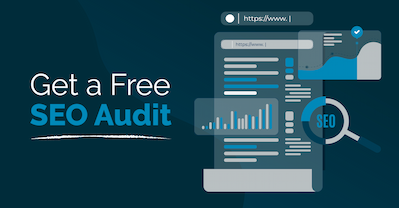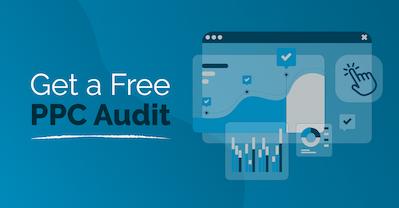*Updated June 5, 2023
What Exactly Is SEO?
Digital marketing is full of acronyms, and it’s highly likely you’ve heard the one everyone seems to be talking about: S.E.O.
But what is SEO?
Maybe you’ve been told you need it to be more visible online and gain more business. Or heck, maybe you’ve already attempted to implement SEO into your website, only to have a strong urge to repeatedly bang your head on your desk (we don’t blame you, there’s a lot to learn).
Whatever the case, we’re here to walk you through it. Here’s everything you need to know about SEO.
Learn more about how to improve your SEO:
Table of Contents:
What Does SEO Include? 6 Key Strategies
- Keyword Research
- Competitor Research
- Technical SEO
- Link Building
- Local SEO
- Combination of Other Digital Marketing Tactics?
What Is SEO Marketing

Definition
SEO stands for search engine optimization. It’s a digital marketing strategy that fine-tunes your site to show up for relevant online searches.
The Concept Behind SEO
Take a moment to look at the search engine results pages (SERPs) on Google. Why is one website showing above another? Why are certain businesses listed at the top, whereas others are only reachable through endless scrolling?
This is all because of SEO. Search engines use bots and algorithms to determine your site’s worth based on specific metrics. Then, it’s ranked accordingly on their results pages.
Bots/Crawlers
Though the Google search page looks like a standard website, it’s much more than that. Behind it are numerous bots that crawl through your site. These bots outline and index the meaning and value behind your site’s content.
Think of indexing like adding a new book into a library’s database. If your book—or website; see what we’re doing here?—isn’t indexed, your target market won’t be able to find you. And for the bots to properly index your pages, you need to implement the right SEO practices.
Why? Because of the Dewey Decimal system. Oh, we’re not talking about libraries anymore? In that case, it’s because of algorithms.
Algorithms
While the bots build databases of web pages for search engines, search engines look at your site and use algorithms—a combination of rules and signals—to rank it.
Here are a just few ranking factors (we’ll go into more detail on these later):
- Keywords/search intent: Are you targeting your audience’s needs, pain points, and questions?
- Content: Are you communicating valuable information to your audience?
- User engagement: Does your site encourage people to stay and explore your business, or do they quickly bounce for your competitor’s site?
- Page speed: Does your site load quickly, or does it take a few seconds?
- Backlinks: Are there other authoritative/credible sites that link to your site?
- Domain authority (DA): How relevant is your site for a specific topic or industry?
In a Nutshell…
The greater online visibility and rankings you have over your competitors, the more likely you’ll win customers and improve your bottom line.
You can think of SEO as a matchmaker, connecting your site to your most valuable online customers. By incorporating good SEO practices, you’ll win the trust of users and search engines, snag a VIP spot on the results pages, and, most importantly, get found by the right people.
What Is SEO Marketing?
SEO marketing is simply a digital marketing strategy that intentionally leverages information on your website to help you rank higher in search engine results. Optimizing your website makes it easier for search engine bots to figure out how your site works and get to the good stuff.
SEO marketing basically polishes your website, clearing away digital debris to reveal—and increase—the awesome value of your content. This makes it much easier for search engines to explore and evaluate your site to connect you to the right users.
Why SEO Matters—10 Statistics
So, is SEO worth it? Yes! But don’t just take it from us—here are 10 statistics that shed light on why SEO matters and the lasting results it can bring to your business:
- 68% of online experiences begin with a search engine.
- Although Google doesn’t rely on individual search result pages since switching to continuous scrolling, 88% of all clicks still go to the first three positions.
- 98% of people rely on the web to find information on local businesses.
- 53.3% of all website traffic comes from organic search.
- SEO drives 300%+ more traffic than organic social media.
- 70% of marketers say that inbound (SEO, blog content, etc.) is their highest quality source of leads.
- SEO leads have a 14.6% close rate, compared to a 1.7% close rate for outbound leads (radio/TV ads, direct mail, etc.)
- The top, number one result in Google’s organic search results has an average click-through rate (CTR) of 27.6%.
- There are an estimated 9 billion searches on Google each day.
- Google uses over 200 factors in its algorithm for ranking sites.
Bonus Stats: Will SEO Help My Business?
Considering the #1 spot in a Google search result gets 27.6% of organic clicks, yes—SEO is incredibly effective, and you should only ignore it at your own risk. SEO is especially worthwhile for small businesses benefiting from increased traffic, impressions, keyword positions, and goal conversions.
We know firsthand how exceptional SEO practices can make serious improvements to a website. Our case studies point again and again to incredible results, such as:
12.3m improvement in organic impressions
- 3400% boost in ranking keywords
- 800% added in organic traffic
- 477 increase in Google positions
- 431% increase in new users
So, yeah. We’d say SEO can help your business.
Learn More: 20 Reasons Why Your Business Needs SEO [with Tips & Resources]
How Does SEO Work?
Understanding how SEO works requires explaining the “why” and “how” behind its ranking factors. This can be categorized into two groups: on-page and off-page SEO.
On-Page SEO
It’s easy to think of SEO as beating an algorithm, but remember—winning the algorithm means providing a valuable user experience. And this is what your on-page SEO focuses on.
On-page SEO looks at what your site/page is about and improves its content to help it rank better. Let’s take a look at a few on-page SEO components: keywords, content, page speed, and user engagement.
Keywords
Keywords, also referred to as search queries, are the words, phrases, and questions your target audience is typing into the Google search bar.
Whether it’s how to make a quesadilla or energy supplements, these keywords/phrases align with the goals your prospects are looking to achieve via search engines. In other words, they carry search intent.
The more you craft content around keywords and search intent, the more likely your web pages will show up for these relevant queries. Better still, the right people will be able to discover your business.
Content
Content is basically all of the words, images, videos, infographics, and anything else you have on your website. It’s the mode of communication that nurtures your target market through the buying cycle.
Good content not only illustrates your unique selling proposition but also educates users. It taps into your audience’s pain points and provides them with valuable tips. This may involve the use of:
- Your keywords/target phrases
- Statistics from reputable sources
- Details/examples that provide a comprehensive perspective on a topic
- A well-organized structure (listicle/bullet format, headers, etc.) that helps with readability
But here’s the catch: Your content actually has to be useful. Your visitors can sense useless information. And guess what? So can search engines. No matter what, always strive to provide quality content that teaches, nurtures, and inspires. It’s the only way to win the trust of Google and, more importantly, your audience.
Page Speed
Also called page load time, page speed is the time it takes for the contents of your webpage to load fully.
While the difference between two and four seconds may seem minor, it isn’t for your customers. In fact, 53% of mobile users abandon sites that take more than three seconds to load. Google takes the user experience into account; if it notices people are leaving your site and moving on to a competitor’s, it will count this against you.
SEO can help you boost your page speed through technical methods like:
- Optimizing your site’s code. Do you have unused code or unnecessary characters slowing down the page speed? These should be deleted.
- Minimizing redirects. The more redirects you have, the slower your page loads. Removing redirects and plugins can speed up the HTTP request-response cycle.
- Reducing file size. Use software applications like Gzip to reduce the size of your CSS, HTML, and JavaScript files.
User Engagement
Part of Google’s search algorithm ranks your site based on engagement metrics such as:
- Traffic rates
- Bounce rates
- Click-through rates (CTR)
By using good conversion rate optimization (CRO) strategies, you can improve your on-site experience to boost engagement and conversions. These optimization tactics might involve:
- Re-writing your landing page copy to make it more concise
- Crafting headings that target your keywords and compel people to keep reading
- Crafting the right calls-to-action (CTAs) and using buttons to make them obvious and clickable
- Adding in a 30-second delay timer on your pop-ups
When people browse and click through your site, these actions tell Google your site provides value.
Off-Page SEO
Off-page SEO focuses on how authoritative and popular your site is. Greater authority increases the likelihood that your site will rank well.
The two key manifestations of site authority are the number of backlinks you have and your domain authority.
Backlinks
If another site links to your site, this is called a backlink (also called an inbound link). Google sees backlinks as votes of confidence; more votes means your site has a better chance to rank well for relevant search queries.
Keep in mind, not all backlinks are created equal. Google looks at various factors to determine the worth of your backlinks. Here are a couple:
- Relevance: The site pages pointing to yours must be relevant to your topic and industry. Otherwise, they won’t add much to your credibility. For example, say you’re a health and wellness organization with backlinks from two pages, one about installing air conditioners and another about meal prepping. Chances are, the latter link will provide more value.
- Authority: Backlinks from credible sources boost your site’s authority. It shows search engines that you provide reliable, accurate information. Not to mention, it can drive high-quality referral traffic to your site.
Domain Authority
Developed by SEO software company Moz, domain authority (DA) is a search engine ranking score.
The score ranges from one to 100. A higher score indicates a greater ability to rank well on search engines. You can check your DA using Moz’s Link Explorer.
All the on-page and off-page factors above play a role in your DA. If your DA score isn’t as high as you hoped, start tweaking your on-page and off-page elements.
For more information on ranking factors and how they impact SEO, check out the 10 most important Google ranking factors.
What Does SEO Include? 6 Key Strategies
So, how do you carry out these on-page and off-page SEO tactics without wanting to pull your hair out? Luckily, there are SEO strategies that can help you stay on track and fulfill Google’s ranking guidelines.
1. Keyword Research
Keywords are central to SEO. They’re the linchpin that solidifies your content with the needs of your prospective customers.
Good keyword research involves starting with the right groundwork, such as:
- Fleshing out target personas. In other words, who are you trying to talk to and nurture? Personas help you gain a better focus on the keywords and content you should pursue.
- Gathering keyword, site, and sales data. Understanding how your site has performed in the past, the current keywords you’re ranking for, and the types of products/services that are popular provide direction on the terms you should target. Moreover, it can help you gauge where in the buying journey you need to provide more attention.
Once you have the relevant information, you can use tools like Google Trends and Keyword Generator to help you come up with keywords. These tools can also offer insight into how competitive these terms are.
2. Competitor Research
Speaking of competition, do you know what your competitors are up to? Where you stand says a lot about how successful you are and the areas you need to work on.
Start by thoroughly analyzing your competitors’ backlinks, DA score, keyword rankings, and content. From there, you can scope out critical opportunities you need to invest in to level up your game.
This doesn’t necessarily mean you need to do exactly what your competitors are doing. Not at all—use them for inspiration, find the gaps in their strategies, but then execute everything 10 times better. (Easy, right?)
3. Technical SEO
Earlier, we discussed page speed optimization that involves enhancing your code and reducing file sizes. This is part of technical SEO.
Technical SEO entails optimizing all of your technical site components to help search engine bots crawl and index your site more effectively. Unless you’re a tech/online guru, you’ll need the help of your web development team to tackle this.
Technical SEO includes, but is not limited to:
- Implementing HTTPS by installing an SSL certificate. In 2014, Google announced they would consider HTTPS as a ranking factor since it shows that a site carries a secure and encrypted connection.
- Making your site mobile-friendly by following Google’s mobile-first indexing best practices. As more than half of all site traffic is accessed through mobile devices, this cannot be overlooked.
- Creating an XML sitemap. Similar to a roadmap, a sitemap is essential for helping search engine bots navigate and efficiently crawl your site. It should contain useful information, like which of your web pages are priority and when a page was last updated.
4. Link Building
Link building is the process of acquiring backlinks. This involves:
- Reaching out. Are there any credible sites/organizations you’ve been eyeing that would make a good business partner? Reach out to them. Share your values and goals, and kindly ask them if they’d be willing to link to your site on one of their pages.
- Digital PR. Look into digital PR for a website within your niche. Be sure to drop a link to your site in the article before publication.
- Identifying unlinked mentions. There might be sites out there that mention you but don’t actually link to you. This is the perfect excuse to reach out and kindly ask them to turn that mention into a link. With tools like Ahrefs’ Content Explorer, you can find relevant unlinked mentions.
5. Local SEO
Are you a business that provides services in specific geographic locations? If yes, then you need local SEO.
Local SEO is a process that optimizes your business’ online presence to rank for local searches. Say you’re a roof repair company in the Orange County, CA, area. Implementing the right local SEO practices will help you show up for “roof repairs near me” queries conducted by OC residents.
Local SEO involves setting up and improving your business in online directories like Google My Business and Apple Maps. For guidance on where/how to start, check out Big Leap’s local SEO tools and free expert audit checklist guide.
Combination of Other Digital Marketing Tactics
Here’s the thing—you can’t drive lasting results with SEO alone. SEO is simply one piece of the puzzle.
To make the most of SEO, you need to combine it with other digital marketing strategies like:
- Content marketing: Without content, you won’t have anywhere to add those keywords. While SEO drives people to your site, you won’t gain any leads if you aren’t nurturing them with the right content. Good content strategy entails planning unique content (think blog posts, infographics, case studies, videos, etc.) for each stage in the buyer’s journey—awareness, interest, consideration, intent, evaluation, and purchase.
- Reputation management: Reputation management involves cleaning up your online image by burying the negative and illuminating the positive aspects of your brand. You can’t just take down websites or change your public image overnight. You need to incorporate SEO tactics to move your negative listings further down the results pages. To learn more, check out how Big Leap optimized and crafted SEO-centered content to clean up our client’s online reputation.
- Social media marketing: Facebook, Twitter, Instagram, the list goes on…social media is an essential part of building your brand. Though social media doesn’t directly impact SEO, you can drive more traffic to your site by sharing blog posts and videos that carry good SEO practices. When your followers share your content with their friends, it will only elevate your organic traffic, engagement, and brand awareness.
- Conversion rate optimization (CRO): While SEO drives visitors to your site, CRO works on converting those visitors into leads. This can include crafting compelling CTAs, finetuning your landing page copy, and implementing reviews/testimonials. When you combine SEO with CRO, you can win lower bounce rates, more clicks/interactions throughout your site, higher conversions, and higher returns.
- Marketing automation: Marketing automation takes the results SEO brings (say, visitors who sign up for your newsletter or a free offer) and automates them. It gets rid of manual work and efficiently moves your leads through the buying cycle. For example, with marketing automation software, you can segment all your newsletter contacts into specific groups; maybe it’s by engagement history, demographics, or geographic location. Whatever it is, you can nurture each group with customized messages.
We’ll be honest—marketing automation is pretty broad. But to keep it simple, its goal is to reach out to more people on a personal level; this can save you time AND bring you more revenue. By implementing automation, you can accelerate your SEO efforts without sacrificing quality.
How Long Does SEO Take?
You’ve probably heard SEO takes a while to achieve results. But exactly how long is “a while”?
First, remember that SEO is a long-term strategy that requires consistency over time, effort, and a bit of patience. But once a strong foundation is built, the work continues to reap results.
As much as we’d like to give you a solid answer, generally, it takes 4–6 months to start seeing results. Keep in mind, the specific SEO time frame depends on factors like:
- Your website: If your site is fairly new, you probably won’t see results until several months or even a year into your strategy. You need to gain momentum in the online space, first via methods like acquiring sufficient inbound links and producing high-quality content that drives traffic.
- Your keywords: The types of keywords you’re targeting and how competitive they are in the online space determine how long it will take for your content to rank well.
- Your business & competitors: What kind of business do you have, and how are your competitors performing online? Do your competitors have a long and solid history with Google? Depending on where you stand, it may take months to catch up to them.
Good & Bad SEO
Only some people have the patience to wait around for SEO results to blossom. Sometimes, this compels people to try and find shortcuts.
Keep in mind, there are penalties for breaking rules in the SEO world. Search engines are smart enough to know if you’re simply trying to gain an unfair advantage over your competition. Therefore, you’ve gotta know the difference between good and bad SEO.
It all comes down to infusing your strategy with good intentions—intentions centered on providing value for your audience. If Google knows you’re injecting your site with authenticity (e.g., naturally weaving in keywords rather than stuffing them) and thoroughness (e.g, conducting extensive audits and making data-driven decisions), it will reward you.
Like most good things in life, SEO takes time.
How Much Does SEO Cost?
Similar to SEO timeframes, how much SEO costs depends on components such as:
- Your goals: Do you have local or national ranking aspirations? Where and how do you want to be seen online? Your goals determine how aggressive your SEO should be. The more you want to grow, the more you’ll need to invest.
- Your business & industry: What’s your current DA score? How competitive are the keywords in your industry? The more competitive industry you’re in, the more time SEO will take and the more it will cost.
- Your revenue: In February 2023, U.S. marketers invested an average of 10.3% of their business revenues into marketing tactics that included SEO. Take a minute to look over your last year’s revenue. How much of that are you willing to pour into your SEO?
- The expertise and skills required: SEO involves tapping into the expertise of various teams like web development, marketing, outreach, content, graphic design, and social media. Depending on the resources you have on your end, you’ll need to invest in the gaps. A good SEO agency will already have teams ready to give your SEO strategy the attention and expertise it deserves.
If you’d like a bit of guidance on how much of your marketing budget you should set aside for SEO, check out our digital marketing budget calculator. It factors in your industry, revenue, and how aggressive you’d like to be (low, medium, or high).
What’s the Difference Between SEO and PPC?
When making decisions about investing your time and online marketing dollars, SEO versus PPC is a pivotal distinction you should consider.
PPC—also known as pay-per-click or paid search/marketing—is a marketing strategy that involves paying for ads and clicks to drive traffic to your site and other online profiles. PPC is highly targeted, meaning an ad will only be shown when a user types a specific keyword into Google.
Several platforms offer PPC services. These platforms include:
- Google: Those search results labeled “Sponsored” at the very top of the SERP are Google PPC ads. Google Ads allows you to set a budget and monthly cap.
- Facebook: Social media has become a competitive space for brands, which is why Facebook offers PPC ads to help you stand out. Facebook Ads Manager lets you create your own PPC ads (image, video, carousel, etc.).
- LinkedIn: LinkedIn’s Text Ads let you select a specific professional audience you want to reach and create your ad. You set your budget and pay only for the ads that work.
- Instagram: With Instagram’s business ads, you can create story, video, photo, carousel, and collection ads. If you craft the right content, you might just compel users to stop looking at their usual accounts and explore yours.
- AdRoll: AdRoll lets you analyze the performance of your PPC ads across different sites. You’re able to measure their performance and gain insights into your campaigns.
PPC is helpful if you’re looking to drive short-term results and target niche audiences. It also allows you to use retargeting—showing your past site visitors relevant ads when they’re browsing the web—to boost conversions.
You might be thinking, “Well, if PPC gets me quick results, why not invest there?” You have to think about the intent behind PPC and SEO, which brings us to our next point.
So Which Is Better—SEO or PPC?
While there are several pros and cons to paid and organic search, one isn’t better than the other. In fact, they fulfill different purposes. PPC drives short-term results, and SEO drives long-term results—you need both to safeguard the viability of your business.
SEO can help your organization deliver great content, and PPC can help you spread your content to the right audience. Using SEO and PPC together can quickly drive traffic to your site quickly and boost your online presence for long-term success.
SEO Changes Constantly
One of the hard facts about SEO is that it changes constantly. Search engine algorithms perpetually evolve, which requires you to shift your SEO strategy accordingly. And this involves a lot of trial and error to get it right.
This is why SEO is one of the most hated marketing tactics; it takes hard work and consistent effort to drive results, which is why many businesses turn to SEO companies.
How Can an SEO Agency Help Your Business?
SEO benefits your business by driving more traffic to your site, boosting your credibility, and improving brand visibility and awareness. By finding a trusted SEO team that invests the time to create customized strategies tailored to your goals, you can gain the right footing in the online space. You’ll also have the opportunity to gain insightful knowledge on SEO to ensure your strategy is coated with the right intentions.
A good SEO strategy is as much about implementation as it is about evaluation. In other words, you need the right metrics to get started and the ability to keep track of changes along the way. Tools such as Analytics and Search Console help determine what’s working and what isn’t to recalibrate your strategy and boost your site’s performance.
SEO companies know how to leverage these and other tools to further maximize results according to your goals.
There is no easy, one-size-fits-all SEO marketing strategy. Only a well-constructed campaign crafted with your brand and business goals in mind can hit the mark for your company—which is why your SEO strategy needs to hit all the points above and do it well to make an impact.
Kick Off Your SEO Journey for Free at Big Leap
If you’re looking for an SEO team to help safeguard the long-term viability of your business, contact Big Leap. With over 15 years of experience helping 600+ businesses like yours, our team thrives on learning and discovering customized SEO strategies that drive results.
And if you’re still on the fence, no worries. We can get you started with a free strategy session—no strings attached. We’ll get to know each other more and give you a preview of what we can do for you.


















